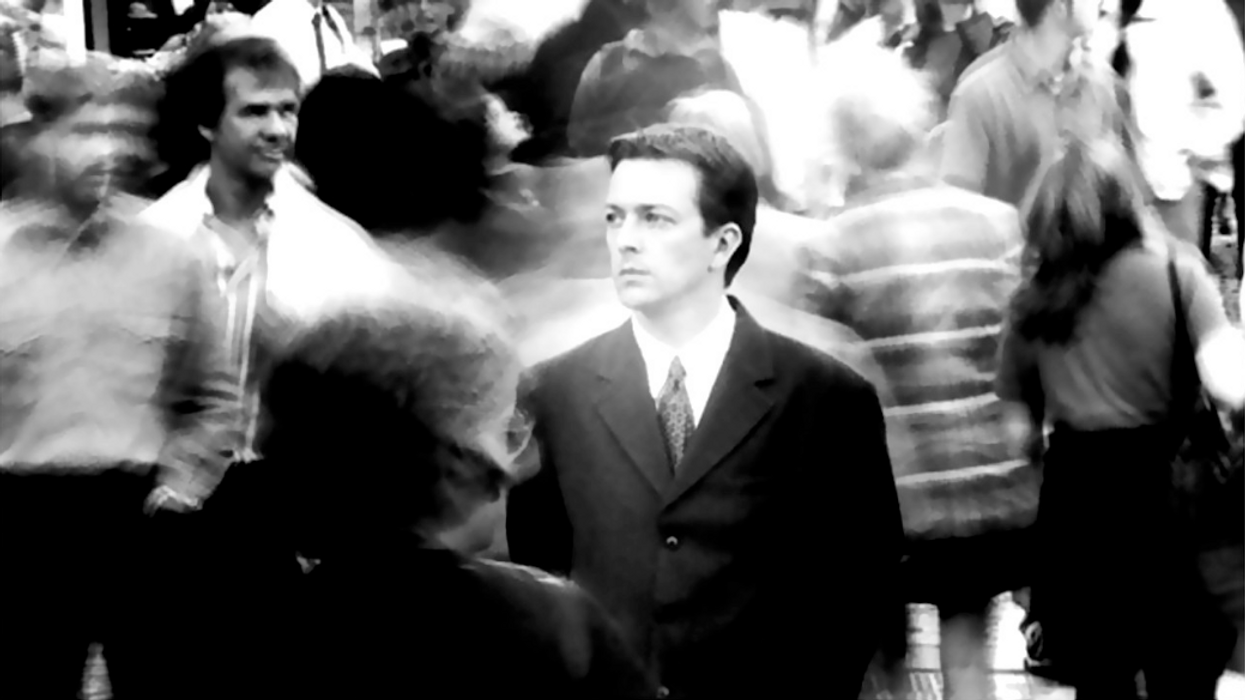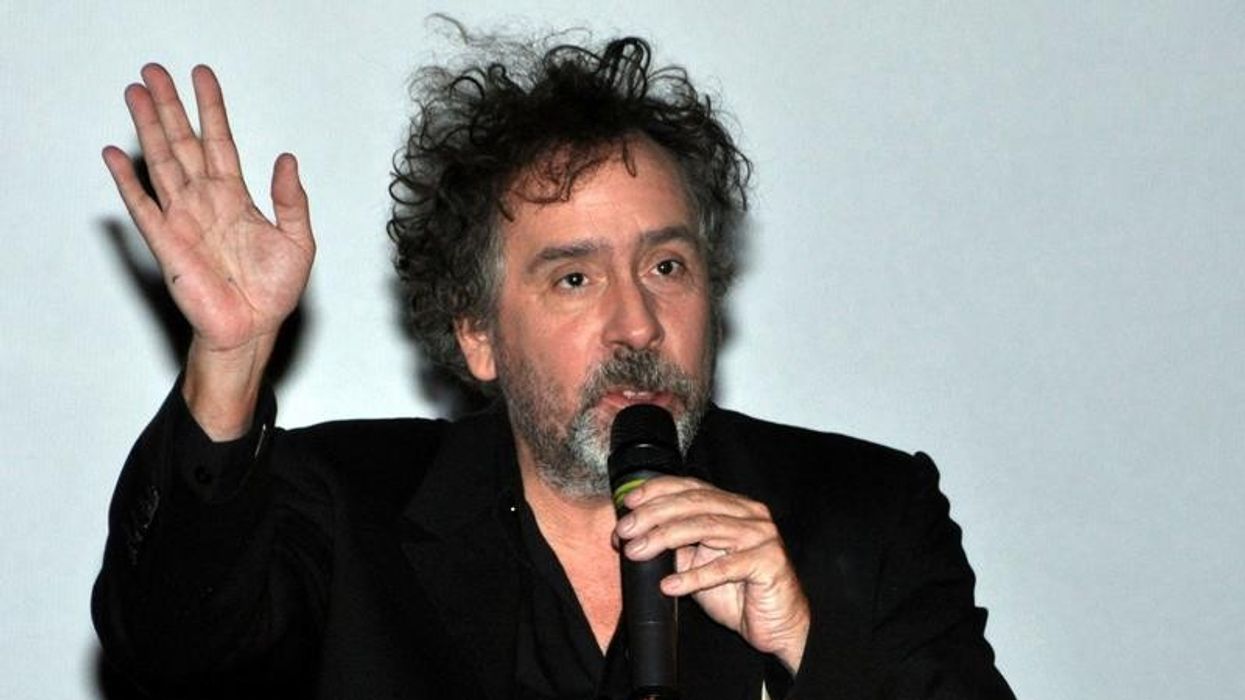Watch: How Christopher Nolan's 'Following' Laid the Groundwork for His Career
Christopher Nolan's ultra low-budget indie debut provided signs of the director's later work.

While Memento was the first film that catapulted him into public consciousness, Christopher Nolan's first film was actually made two years prior. Following is an urban noir and the story of two men. One is a a shy, retiring writer and the other a burglar, though they are united by a voyeuristic fascination with the lives of others that will lead to no good end and a double-twist ending of remarkable dexterity.
In the video below, Thomas Flight looks for hallmarks of the director's style that are already present in his debut, a film that should be a true inspiration for any would-be indie filmmaker out there, a feature shot on a year's worth of Saturdays for $6,000.
Visual Style
Nolan was making his first feature at the end of an era where film was the only game in town as far as narrative film was concerned. Almost the entirety of the film's budget went to buying and processing black-and-white film stock, as is/was often the case on low-budget movies shot on film. On a low-budget movie, stock and prints eat up the most amount of cash, while everything else, from locations to food and labor, is usually obtained for free or favors.
The film was shot 2.5:1, meaning that for every one minute of useable footage, there could be two and a half minutes of exposed footage, and most of the film is composed of first takes.
According to Nolan, the cast and crew rehearsed for months on locations that they had to "beg, borrow, and steal" so that "the actors were able to quickly and efficiently adapt the scene to the location they found themselves in, and the hand-held, 'newsreel' style camerawork let him be spontaneous in blocking out the scene, generally shooting just two long singles which were then intercut." Nolan turned the challenges into stylistic benefits, and shooting the film himself on an Arriflex 16BL, did not waste precious film with lots of starting and stopping (each time the camera rolls, there are lost feet as the camera gets to speed, not to mention that the beginning and end of a roll aren't usable.)
At first, the filmmaker had attempted to shoot a feature on color, although was quickly scrapped when he realized that getting an acceptable image on color film is far more expensive (primarily because of the stock's cost as well as the extra equipment needed). As a result, Following features almost entirely hand-held cinematography, and Nolan said that the "cinematography [was] a way of tapping into the cinematic feel of film noir, whilst giving it a different spin by shooting the scenes in a more modern documentary style." Nolan turned his limitations into an advantage and in doing so, produced a work that looks like it cost far more than it did.
Other stylistic choices that were actually budgetary concerns were the use of voice-over to open the film and create a good sonic first impression. The film's score was composed by Nolan's friend David Julyan, who had worked with Nolan before; it would be his first feature, and he would go on to work on Memento, Insomnia, and The Prestige. The film also convinced the director that it was vital to capture the best quality raw, location sound as possible (ambiance, room tone, and good quality dialogue) and began his use of sound as a storytelling device.
"I decided to structure my story in such a way as to emphasize the audience's incomplete understanding of each new scene as it is first presented."-Christopher Nolan
Storytelling
Regarding his choice of plot, Nolan has remarked that "the script was written along the lines of what I see as the most interesting aspect of film noir and crime fiction; not baroque lighting setups and sinister villains, but simply that character is ultimately defined by action. In a compelling story of this genre, we are continually being asked to rethink our assessment of the relationship between the various characters, and I decided to structure my story in such a way as to emphasize the audience's incomplete understanding of each new scene as it is first presented."
This is really just a principle of good drama, of course, that character is defined by action, but the way that Nolan capitalized on film's ability to withhold and dispense information at will, to change the viewer's comprehension at will, was a crucial choice and one that would follow him throughout his career (it's present in all of his films, to one degree or another, but certainly on full display in Memento, The Prestige, and Inception. Nolan has always demonstrated an affinity for magicians, con artists, and tricksters, and this was present from the beginning.
Flight points out that Nolan has used "a non-linear narrative to some extent, in nearly all his films," also noting a recurring device which appears at the beginning of Following and appears in his other films, including The Prestige, Memento, Interstellar and Inception, one where a voice-over is accompanied by other footage that contextualizes this voice-over. The characters in Nolan's films (the protagonists, at least) are almost always introspective.
They might be burglars, sure, but they are "interested in the philosophical" implications of what they do. Ditto the magicians, astronauts, corporate dream thieves, and homicidal amnesiacs. His characters don't just stumble through the stories they inhabit, but, like a reflection of their creator, they interrogate the landscape and are obsessed with changing and defining it.
Nolan has clearly risen to a position where making films is far easier than it was (or at least, it could be) but he has also clearly continued the tradition of challenging himself with every new movie. If you haven't seen Following, you really should, as it's an incredibly stylish and interesting film that should prove inspiring for any filmmaker. Check out the director himself talking about the film here.
Source: Thomas Flight











